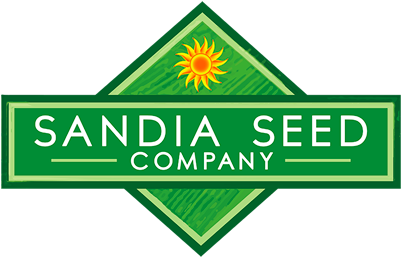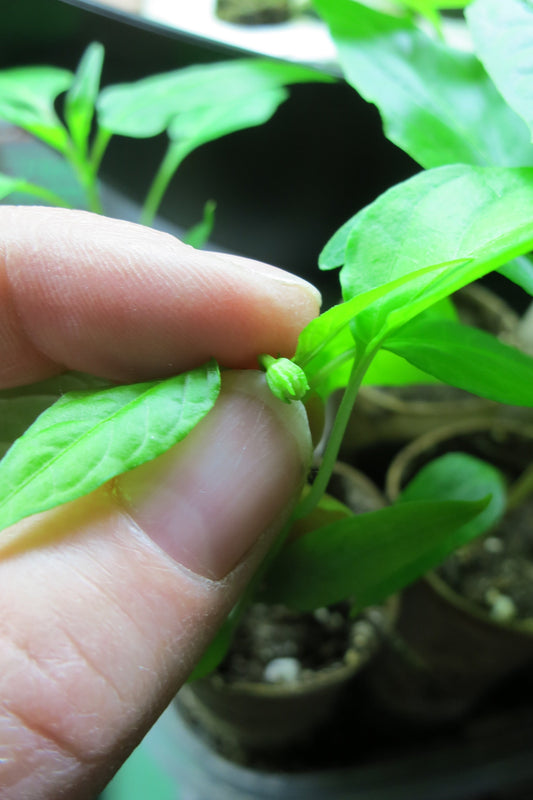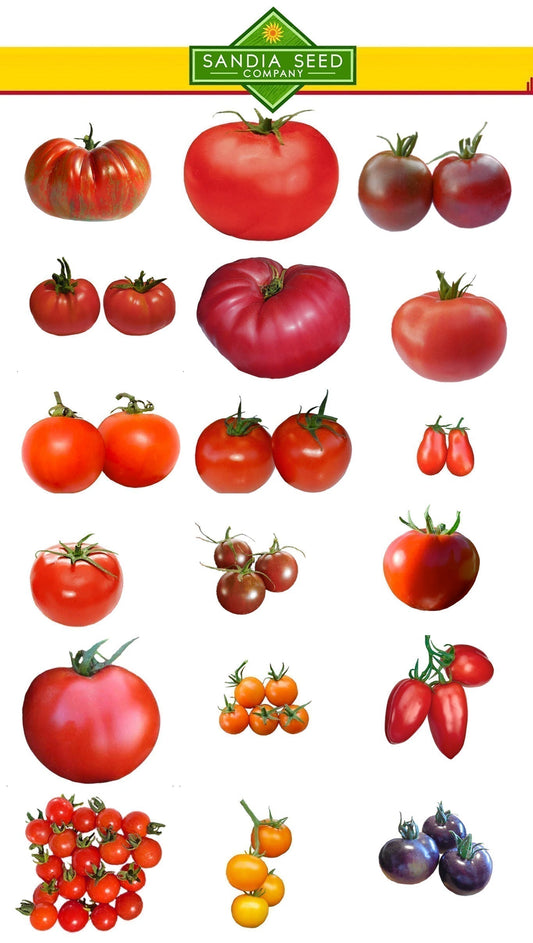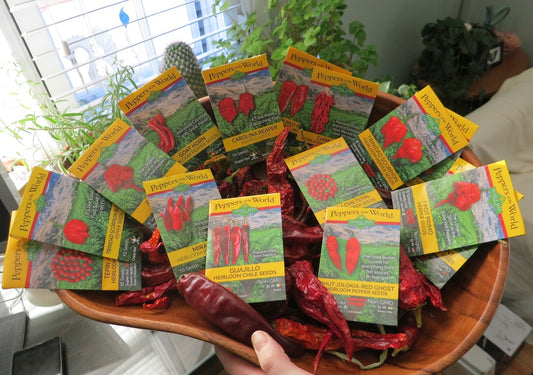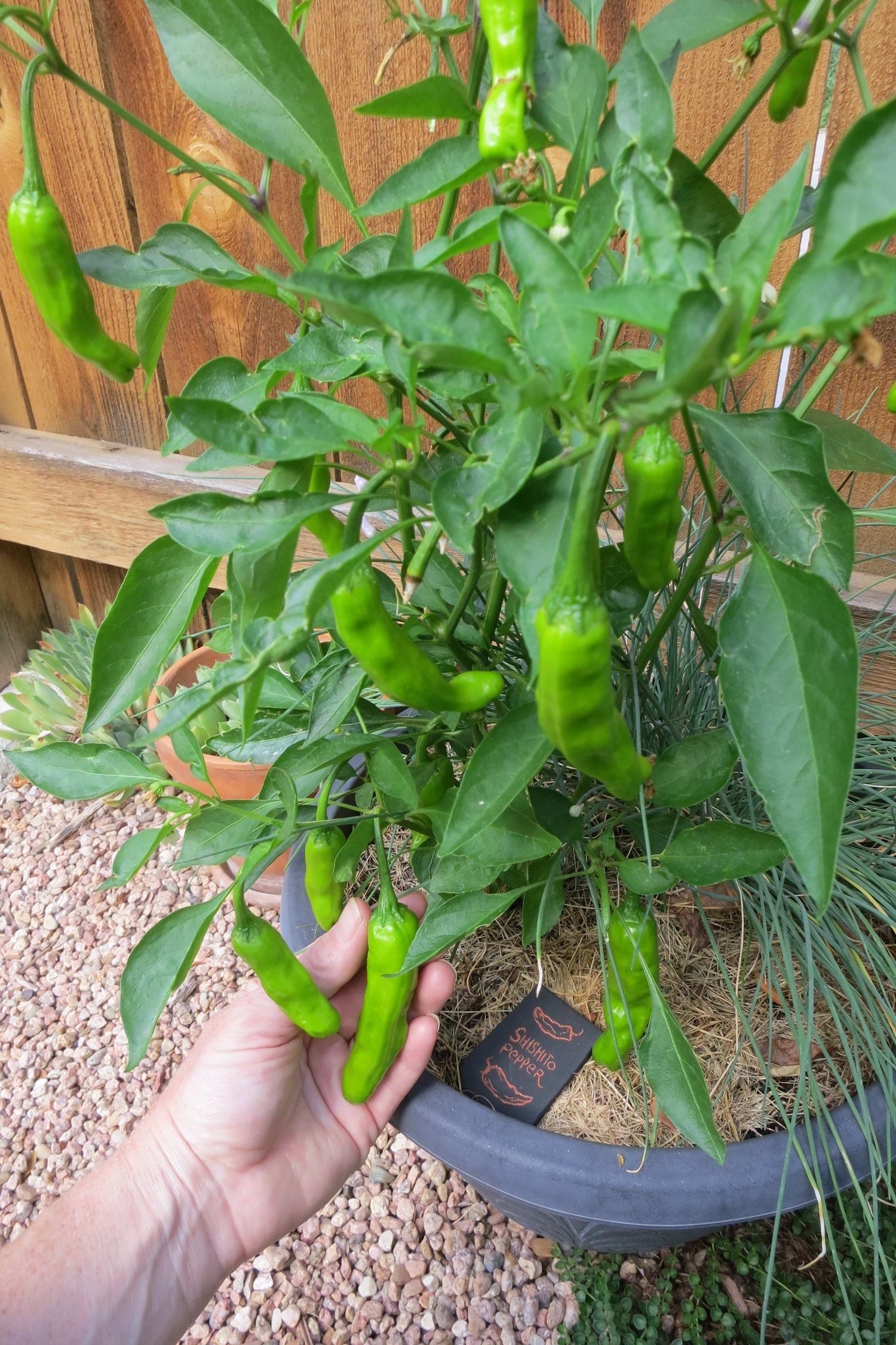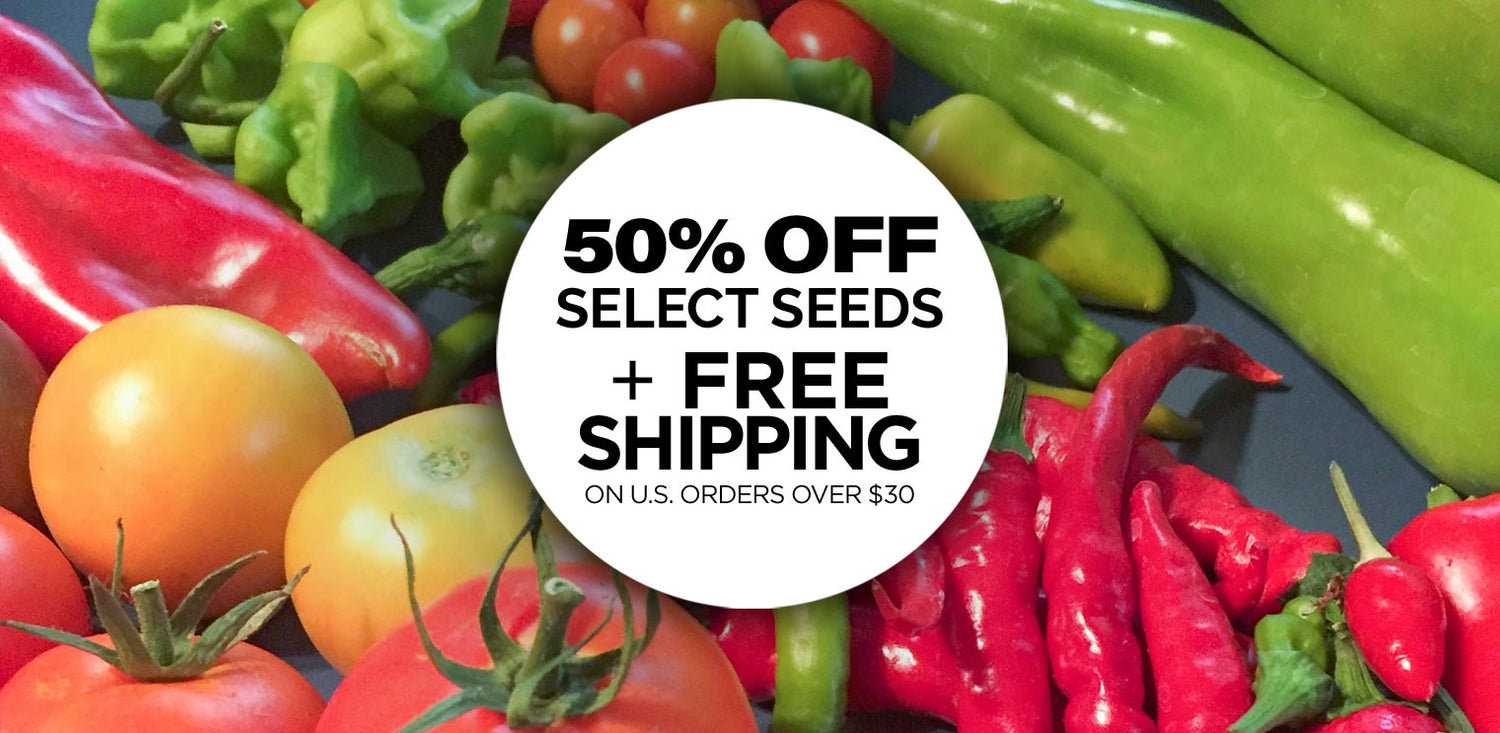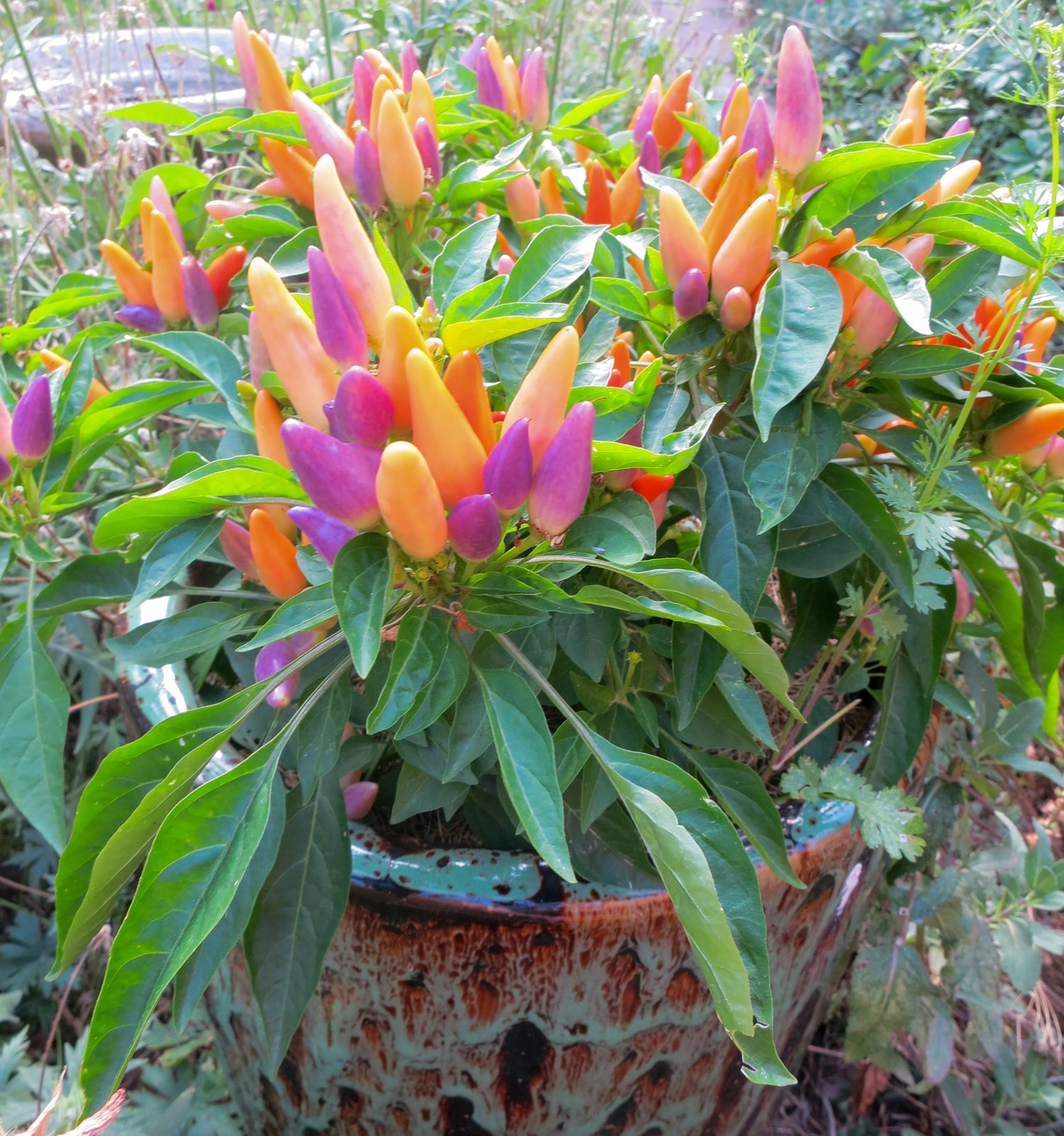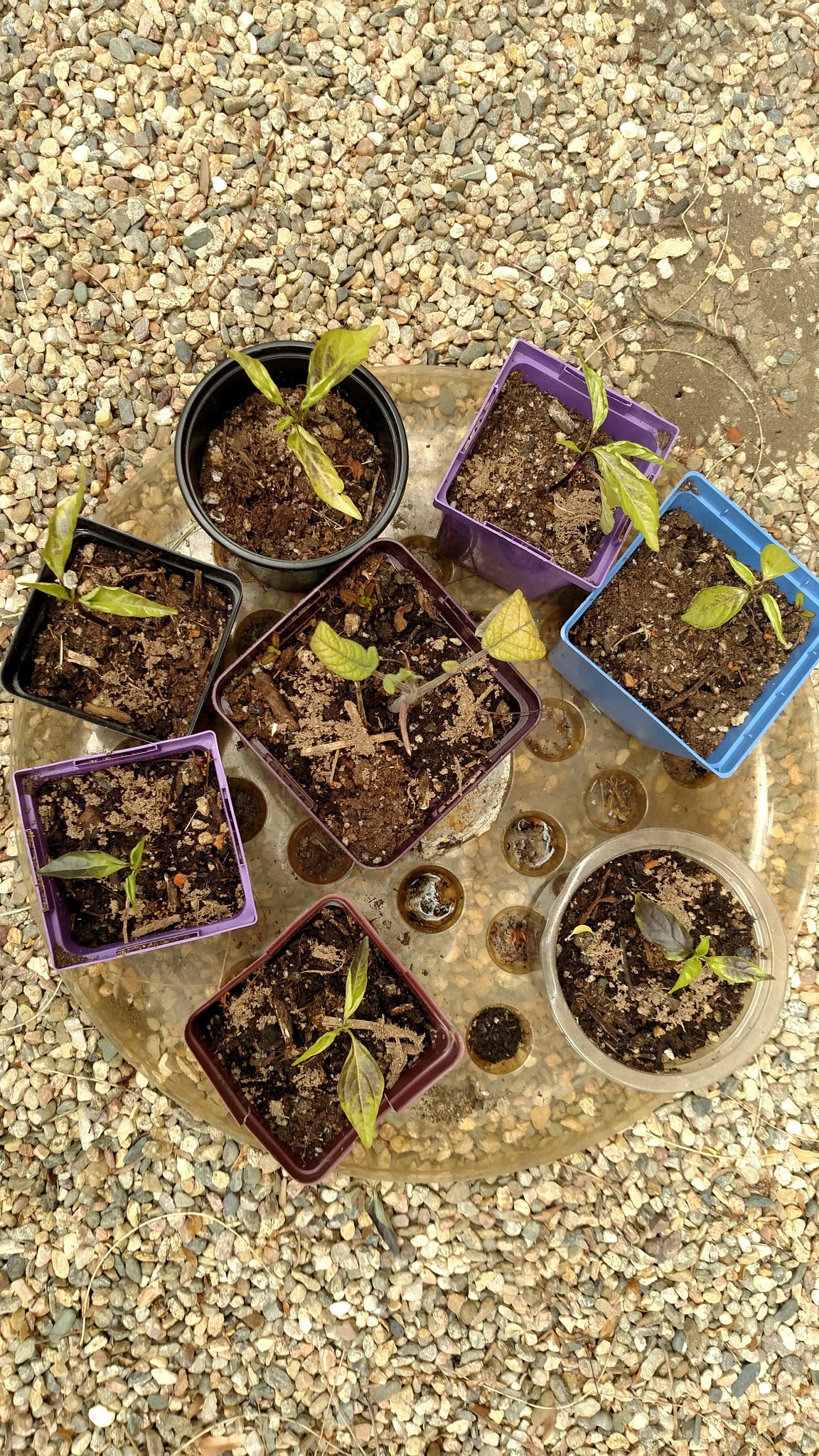
We have this question quite often:
Why are my pepper plants so small?
TOO BRIGHT LED LIGHTS
Recently, we had an experience (see the sad & small pepper plants above) where we had placed a super bright 100W Sansi Floodlight above our transplanted seedlings about 8" away. Sadly, it was TOO bright – if we had it farther away, such as a couple feet, the seedlings may have been fine. But, since they were fairly close to the super bright LED light, it was too much, and even after we turned the light away to bounce it off the wall, the pepper plants stopped growing, turned purple, and started to drop leaves. After a couple weeks, we moved them away to a filtered light in our hoop house outside, but they never recovered. They're about the same size now! We do see a couple tiny leaves starting to grow on top, but we have a feeling these peppers won't recover fast enough to have peppers before winter. They're stunted. Bummer.Lesson learned:
Can pepper seedlings get too much light? Yes.

OVERWATERING
Another Common Pepper Plant Problem that results in small pepper plants is Overwatering.

A few more pepper plant tips for bigger, faster growing peppers:
• Make sure they have full sun, 6-8 hours
After planting outside, having peppers in full sun helps them grow faster. If it gets super hot, over 90˚ F, shade cloth can also be used as the peppers begin to set flowers and fruit to prevent sunburn, though if you have nice healthy and bushy plants, the plants themselves can help shade the peppers. Don't forget to harden off your seedlings before transplanting outdoors!
• Don't Over Fertilize!
Over fertilizing your peppers results in bushy plants but delays flowering and fruiting, so you won't have any peppers! Over fertilizing can also shock peppers and they can turn yellow and drop leaves. If you are planting peppers in premixed potting soil, it has all the nutrients in it already, there is no need to add more. In the garden, adding some fresh compost each year to your garden soil can help keep it filled with nutrients for healthy peppers. We like to use Kelp or Fish Fertilizer or compost tea when watering on occasion, but we avoid high-nitrogen chemical fertilizers. If you use fertilizer, look for a 5-10-10 which has half as much nitrogen as phosphate and potassium, which encourages more fruit production. We also like using an organic Mycorrhizal Fungi Mycorrhiza product when transplanting our peppers into the garden or pots to give them a head start in growing healthier roots.
• Don't transplant pepper plants
outside when it's too cold!
Peppers like temperatures ideally above 60˚ F – temperatures below 50˚ F can stunt pepper plants and keep them small. Make sure to harden off your seedlings before transplanting, and wait until the soil has warmed up with a spell of warm weather, after all chances of frosts have passed. After transplanting peppers outside, if a late cold-spell is expected, keep them warm by covering them if you can. Waterwalls, buckets, and small hoop houses are a great way to keep them warm on cold nights or during cold or haily late spring storms.
Don't worry too much if your peppers don't start growing bigger immediately after transplanting, they need to get established and grow underground first. You'll also find that once the summer temperatures of 70-80˚ F arrive, peppers will start growing much faster! They are hot-weather loving plants.
Check out more of our top growing tips:

